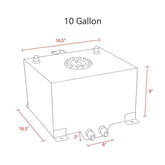Automobile suspension system is an important part to ensure the safety and comfort of driving. After a vehicle has been used for a period of time, the suspension system may show damage or wear and require replacement. Here are some ways to detect if your suspension needs to be replaced.
Here are some signs that your car's suspension may need to be replaced:
Worn shocks/struts - If your shocks or struts are leaking fluid or are making noises when going over bumps, they likely need to be replaced. Signs of worn shocks include bouncing after hitting a bump and nose-diving when braking.
Uneven tire wear - If the tires are wearing unevenly, with more wear on the inside or outside edges, it could indicate a suspension problem like a bad ball joint or strut mount.
Vehicle leans or sways - If the vehicle leans or sways more than normal during turns or high-speed driving, the sway bar links, bushings, or other suspension components may be worn.
Lowered ride height - If the vehicle's ride height is lower than normal, the springs may be broken or sagging.
Clunking noises - Clunks when going over bumps can signal worn ball joints, tie rod ends, stabilizer links or other worn suspension parts.
Alignment issues - An alignment that is off and cannot be adjusted to spec can indicate worn suspension parts.
Rust/damage - Visually inspect the suspension components for rust, cracks or other obvious damage.
The following are several ways to check
Visual inspection: First, a visual inspection is performed to look for suspicious signs. If you notice that the vehicle is leaning or one or more wheels are higher than the others, there may be a suspension problem. Also, check for visible damage or cracks in suspension components such as springs, bumpers, and linkages.
Suspension test: Another common method is to perform a suspension test. Park the vehicle on a level surface, then press down on the side of the vehicle and release. If the vehicle stabilizes after a few jumps, it may indicate a suspension problem. Also, if you notice unnatural lean or body roll when cornering, it could also indicate a suspension problem.
Spring Test: Testing the springs individually is also one way to determine if the suspension needs replacement. Measure the free and compressed lengths of each spring. If the spring's compression and expansion ratios are not within the manufacturer's specified range, it needs to be replaced.
Tire wear: Vehicle suspension problems can also cause tires to wear unevenly. Check for abnormal wear on the tire surface, such as internal or external wear, one-sided wear, etc. If you notice these anomalies, it could be due to a suspension problem.
In conclusion, if you notice any of the above issues with your vehicle, you should consider having your suspension system checked for replacement. Don't ignore suspension issues, as this can seriously affect driving safety and comfort. Timely inspection and replacement of suspension can ensure that your vehicle is always in top condition, allowing you to drive with peace of mind.









